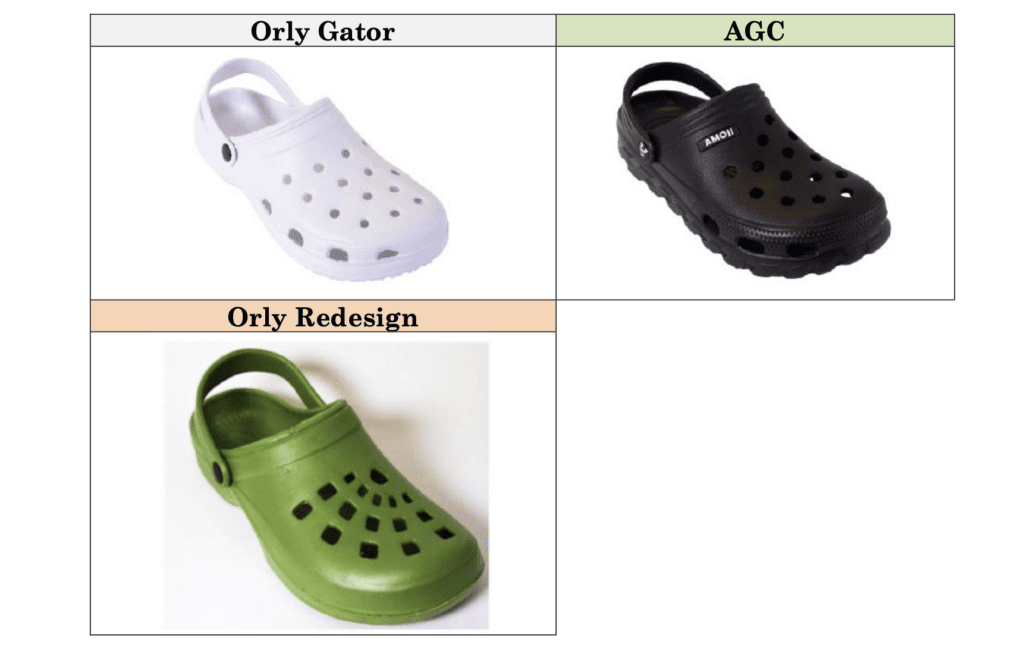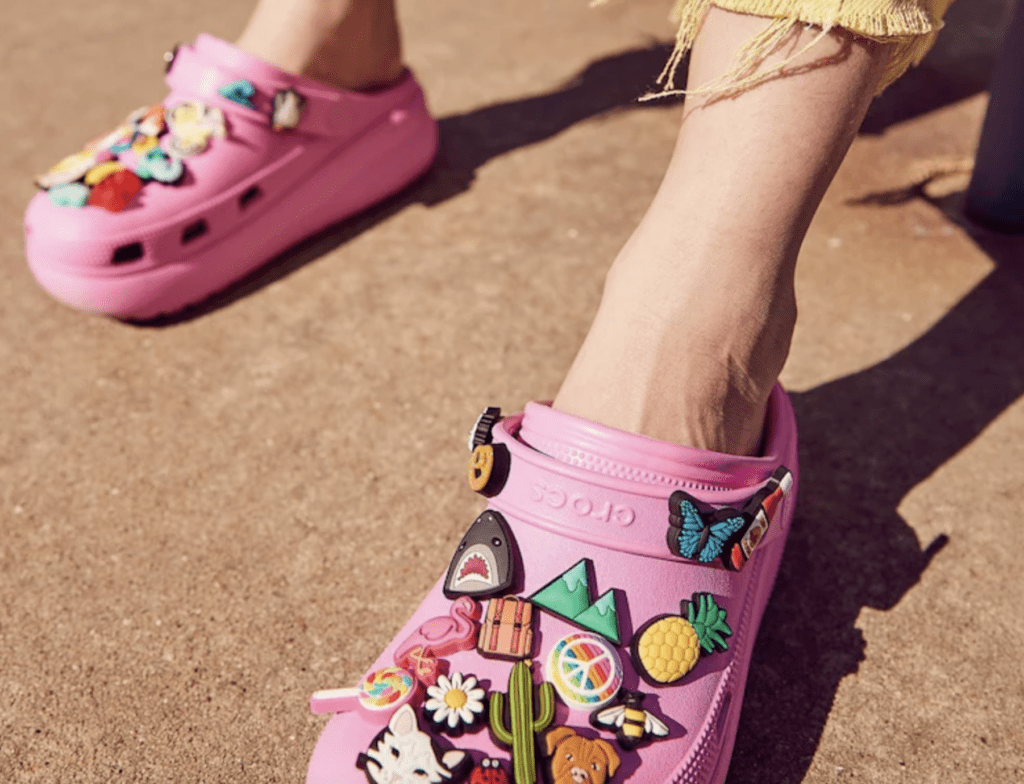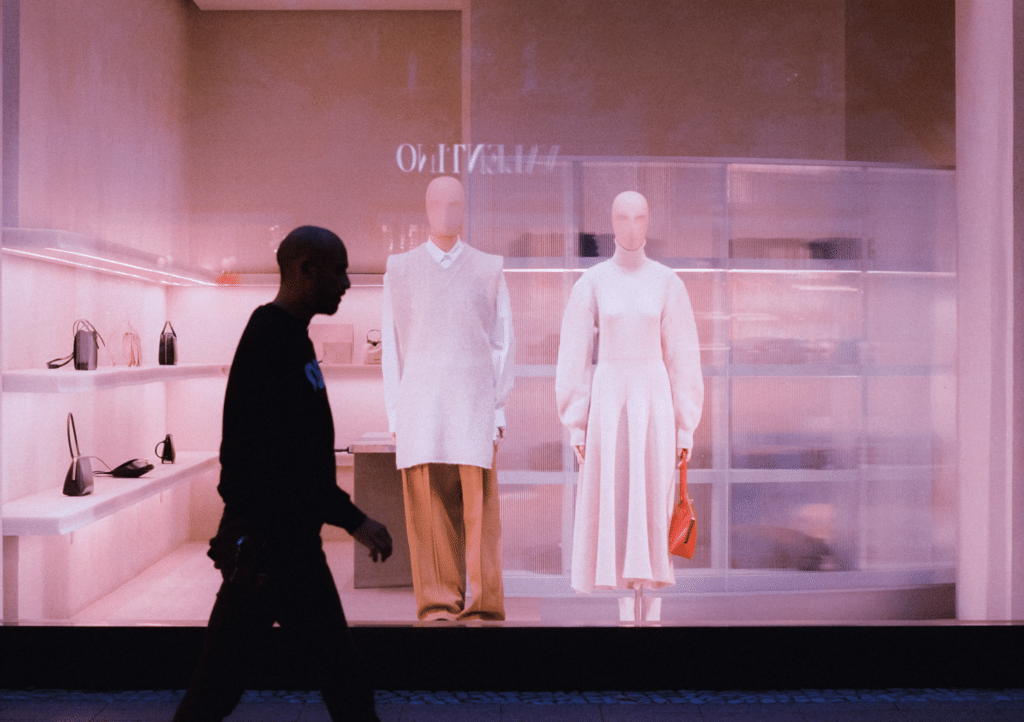The legal battle between Crocs, Inc. and the U.S. International Trade Commission (“ITC”) over the protection of Crocs’ trademarks continues to play out before the U.S. Court of Appeals for the Federal Circuit. The appeal, which Crocs waged in December 2023, zeroes in on whether certain footwear designs by competitors infringe the rubber clog-maker’s registered trademarks, which protect specific aspects of its iconic Classic Clog. Crocs claims that in January 2023, the ITC wrongly denied its protections and request for a General Exclusion Order against the infringing products, prompting its appeal. In its defense, the ITC contends that its decision is backed by both procedural and substantive grounds.
A Bit of Background: In January 2023, the ITC ruled against Crocs’ attempt to block nearly two dozen companies from importing and selling footwear that Crocs claimed infringed its trademarks. In an initial determination, ITC Administrative Law Judge Bryan Moore found that no infringement in violation of section 337 of the Tariff Act of 1930 had occurred in connection with the importation and sale of the allegedly infringing footwear and packaging. Moore further asserted that he found no violation under 19 U.S.C. § 1337(a)(1)(A), which prohibits the importation of articles that restrain or monopolize trade and commerce in the U.S.

The case got its start back in July 2021 when the ITC instituted a Section 337 investigation after Crocs lodged a complaint with the federal trade agency. In its complaint, the Broomfield, Colorado-headquartered footwear company alleged that 21 companies – from Skechers and Loeffler Randall to Cape Robbin and Hobby Lobby – (collectively, the “respondents”) were unlawfully importing and selling “certain footwear products and packaging that violate registered trademarks used in connection with certain shoes.” These marks include the “CROCS” word mark and its clog trade dress, which consists of a “three-dimensional configuration of the outside of an upper of a shoe, the textured strip on the heel of the shoe, the decorative band along the length of the heel strap.”
Crocs argued that the respondents were “intentionally and frequently” copying the “one-of-a-kind ornamental design characteristics” of its footwear, and sought a General Exclusion Order to broadly bar the importation of the allegedly infringing products and cease-and-desist orders targeting specific companies.
In his January 2023 decision, Judge Moore refused to grant any of these remedies.
Crocs’ Case
In appealing the ITC’s decision to the Federal Circuit, Crocs asserts that its competitors’ products are “nearly identical” to its Classic Clog. As a result, they infringe a couple of its key trademarks (Nos. 5,149,328 and 5,273,875), which consist of “a three-dimensional configuration of the outside design of an upper for a shoe comprising a pattern of 13 round holes on the horizontal portion of the upper of the shoe and a textured strip along the vertical portion of the upper having a pattern of 7 trapezoidal openings.” These features, the company contends, make its design instantly recognizable to consumers, and any replication amounts to infringement.
Crocs argues that “the ITC’s findings were inconsistent” and that the Commission “failed to account for substantial evidence of consumer confusion.” Crocs submitted evidence of confusion via social media posts where consumers referred to the competitors’ products as “cheap white crocs.” Additionally, Crocs points to a deposition where the former COO of Orly (of the respondent brands in the case) “confused their own products with Crocs,” which directly demonstrates confusion on the part of consumers.

In furtherance of its bid for a General Exclusion Order, Crocs argues that the ITC “overlook[ed] the repeated instances of knock-offs” and failed to account for “evidence of widespread market infringement.” The footwear-maker insists that a General Exclusion Order is the only effective measure to enforce its trademark rights fully, as current measures, such as Limited Exclusion Orders, do not provide adequate deterrence against the influx of imitations.
Crocs also takes issue with the ITC reliance on a survey submitted by Orly, which Crocs says failed to “isolate consumer confusion caused by the 3D Marks, rendering the results “improper” and untrustworthy. By focusing on this survey, the ITC allowed its competitors to bypass valid protections that the 3D marks afford, per Crocs.
The ITC’s Response
Looking to keep its decision in place, the ITC contended in a response brief filed in September that Crocs’ appeal should be dismissed as untimely, stating that the 60-day period had expired by the time Crocs filed its appeal. Even if its appeal was timely, the ITC argues that Crocs has failed to adequately allege trademark infringement in lieu of a likelihood of confusion. The ITC referred to its analysis of the DuPont factors, including its determination that “there is no evidence of actual or potential confusion and no intent to confuse” on the part of the respondents. It also previously found there are significant differences in price, branding, and retail channels at play, and that “sophisticated shoppers” and the presence of distinct branding on competing products minimize the risk that consumers would confuse them with Crocs.
Another critical element at play, according to the ITC, is that the design elements protected by Crocs’ 3D marks are “narrow in scope” and do not cover the entire “overall look” of the Classic Clog. With that in mind, it claims that Crocs is attempting to extend protection beyond the narrow design elements covered by the trademarks, essentially trying to recreate the expired protections of an earlier design patent.
And still yet, the ITC argues that Crocs failed to establish that its 3D Marks have achieved the necessary level of “fame” for a dilution claim. The ITC states that Crocs has failed to provide sufficient evidence to show that the fame of its hot-selling clogs stems from the specific 3D marks, rather than the overall shape of the shoes. “By the time the 3D marks were prosecuted in 2016-17 … the molded foam clog design and lines, curves, and design elements that have made the Classic Clog ‘iconic’ were regarded as non-distinctive, common, and even ‘generic,’” the ITC argues, asserting that fame derived from the general look of the clog does not automatically confer fame on the specific trademark-protected elements.
Finally, the ITC says it stands by its decision to deny Crocs’ request for a General Exclusion Order. While Crocs argued that its General Exclusion Order request was essential to address widespread infringement, the ITC contends that “a general exclusion from entry of articles is necessary to prevent circumvention of an exclusion order limited to products of named persons.” However, because Crocs did not sufficiently prove a pattern of violations, the Commission opted for Limited Exclusion Orders and cease-and-desists orders that target specific violators.
The case is Crocs, Inc v. U.S. International Trade Commission, No. 24-1300 (Fed. Cir.)











